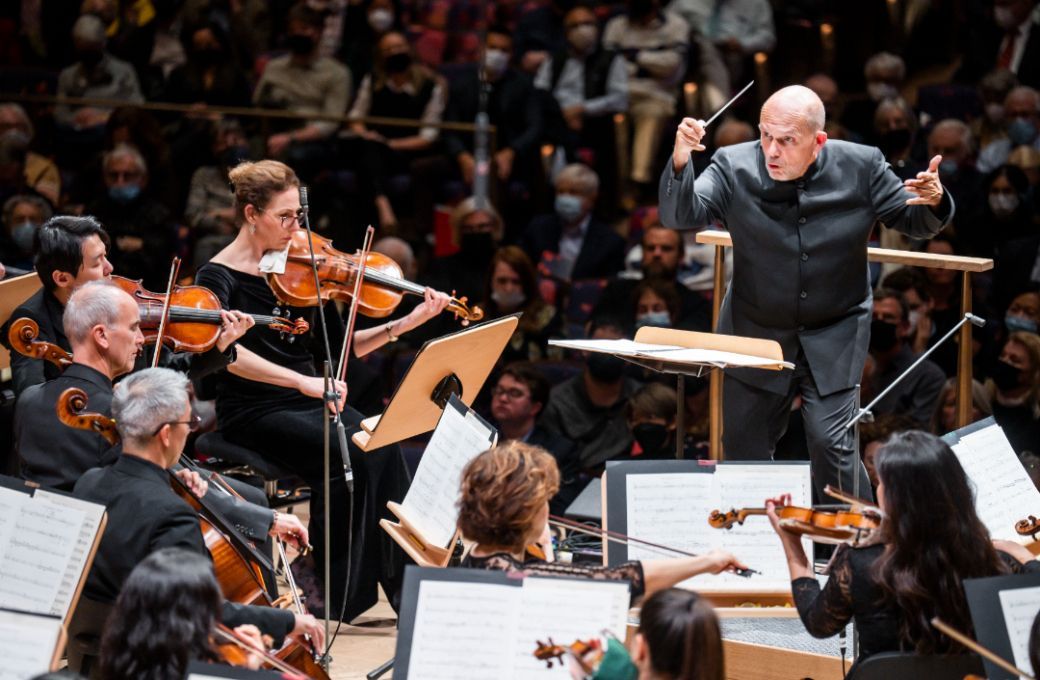The programme for the New York Philharmonic’s second subscription week in the refurbished David Geffen Hall was not meant to facilitate a comparison between the revamped acoustic environment in the newly minted Wu Tsai Theater and the much-disparaged old one. Besides a US premiere and a symphony that the orchestra played for the first time in September, but never in their home base at Lincoln Center, it included just one short work belonging to the standard repertoire: Debussy's Prélude à l'après-midi d'un faune.

The miraculously expanding and contracting sound waves in this free illustration of Stéphane Mallarmé's poem, a work many consider a turning point in the history of music, sounded glorious indeed. Solos – flautist Robert Langevin, oboist Liang Wang and Katy Woolley, the wonderful principal horn of the Royal Concertgebouw Orchestra, in a surprise guest appearance here – emerged with great clarity. Nonetheless, conductor Jaap van Zweden allowed the evocation of the faun’s dreams and desires to linger too much, without fully bringing out the score’s deep sensuality.
Part of Project 19 – the Philharmonic’s initiative to commission 19 works by 19 female composers celebrating the centennial of the 19th amendment – Caroline Shaw’s Microfictions, Vol. 3 is inspired, according to the composer, by “micro science-fiction (within a tweet’s 280 characters)”. Proposing dialogues between sounds produced by the six-member vocal ensemble Roomful of Teeth (of which Shaw is an active member) and those of a colourful orchestral apparatus, the music is full of ludic energy. Each of the five fragments, weaving vocal and instrumental threads, has a longish title recalling the surrealists’ Exquisite Corpse method of assembling collections of words. Exploring “personal, intuitive connections between image and music” that were less specific than references to Miró’s art in Microfictions [Vol. 1], the score might not be one of great consequence, but it was pleasant music to hear.
Florence Price’s Symphony no. 4 in D minor has an unusual history. The work of a composer at the height of her creative power, it is unclear when it was exactly conceived. The score was only discovered in 2009 in Price’s derelict Illinois summer home, among a treasure trove of other valuable manuscripts. It had its premiere only in 2018, more than five decades after her death. Listening to the symphony, one realises once again how gifted a composer Price – whose output has been promoted with diligence in recent years – really was. It’s not its “modernity” or revolutionary character that stand out, but the richness of the thematic material and the exquisite craft with which the musical ideas are developed and orchestrated. The way the Wade in the Water spiritual, in the first movement, or other references to the music of the African diaspora, in the final Scherzo, were integrated in a westernised soundscape seem remarkable despite textures sounding a tad too thick in this interpretation. In particular, the third movement dialogue between the cor anglais (Ryan Roberts) and percussion in the syncopated Juba dance (originated in Angola and also evoked in Price’s other symphonies) sounded particularly convincing. Exposing a different angle, the score is nevertheless full of reminiscences of Dvořák’s music, as well as Gershwin’s interest and love for the same rhythms and sonorities. Van Zweden and the New York Philharmonic clearly underlined this in their Slavonic Dance encore.


